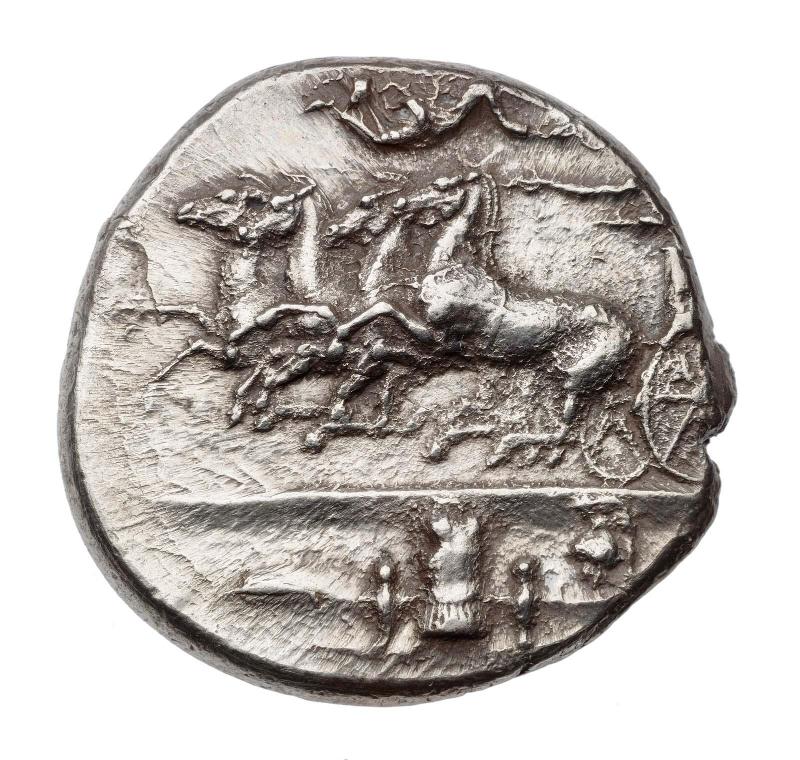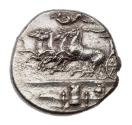Dekadrachm of Syracuse with quadriga, signed by Euainetos
about 400–390 B.C.
Country of Origin, for CustomsItaly
MintSyracuse, Sicily
Medium/TechniqueSilver
DimensionsDiameter: 37 mm. Weight: 43.04 gm.
Credit LineBartlett Collection—Museum purchase with funds from the Francis Bartlett Donation of 1900
Accession number03.946
On View
On viewClassificationsNumismatics
Collections
Chariot racing was one of the earliest organized sporting events. A natural extension of training for battle, such contests were painted on Bronze Age pottery and recounted in the Homeric epics. In the Archaic and Classical periods, chariot races became a centerpiece of the Olympic Games and other athletic competitions. The glory of victory went not to the drivers but to the owners of the horses and equipment, who were generally members of the upper classes of Greek society.Chariot racing seems to have appealed particular-ly to the autocratic rulers of the Sicilian city-state of Syracuse, one of whom, Hieron I (ruled 478-466 B.C.), was an Olympic victor in 476 B.C. Much of the coinage of Syracuse from the late sixth to the late fourth century B.C. features a tethrippon (four-horse chariot) as an obverse image. Static at first, the representation of the horses and driver grew increasingly dynamic and lifelike over time. On this dekadrachm, signed on the opposing face by the die engraver Euainetos and considered a pinnacle of Greek numismatic art, the jagged line of the galloping hooves and the torsion of both human and animal bodies convey a sense of high speed and vigorous action. Nike, the winged personification of Victory, descends to crown the charioteer, foretelling the running of a winning race.The image of a two-horse racing chariot, or synoris, on a roughly contemporary carved gemstone, probably owned by a member of the Greek elite, was heavily influenced by the innovative artistry displayed on the Syracusan coinage. The strain of the horses, one pulling ahead of the other as if to make the chariot turn, and the tension of the driver's body as he handles the reins convincingly capture the excitement of one of the favorite sporting pastimes of ancient Greece.
ProvenanceBy date unknown: with Edward Perry Warren; March 24, 1903: purchased by MFA from Edward Perry Warren
mid-15th century
mid to late 19th century (before 1889)
mid to late 19th century (before 1889)
Early 19th century
late 18th century
early 18th century
late 15th century (?)
mid-14th–mid-15th century
second half of 14th–first third of 15th century
late 15th–early 16th century
mid-13th century
Late 19th century (before 1890)



